Alienware Concept UFO is a Switch killer that plays PC games
The Alienware Concept UFO stuffs a Windows 10 PC into an amazingly portable package
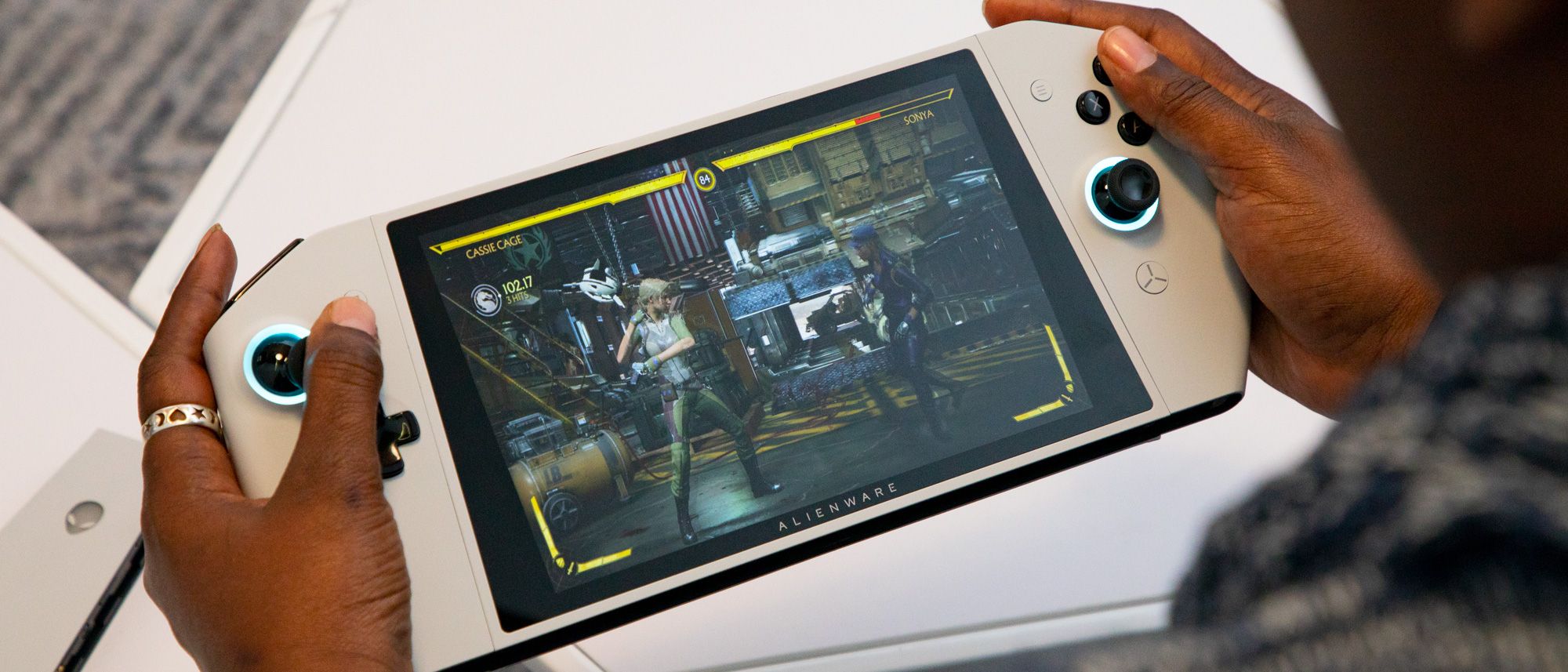
The quest to play demanding AAA games on the go sans gaming laptop has long been a dream of PC makers. And the Alienware Concept UFO realizes that dream in spectacular fashion.
There have been a few promising attempts in the past, but nothing feasible or compelling enough to take off with mainstream gamers. Alienware has created a device so tantalizing, the company has done something it’s never done before –– show off a concept product to the public.
Alienware’s latest venture takes familiar concepts (like the Nintendo Switch) and builds on them to forge what could very will be the future of mobile PC gaming.
Pulling back the curtain — early
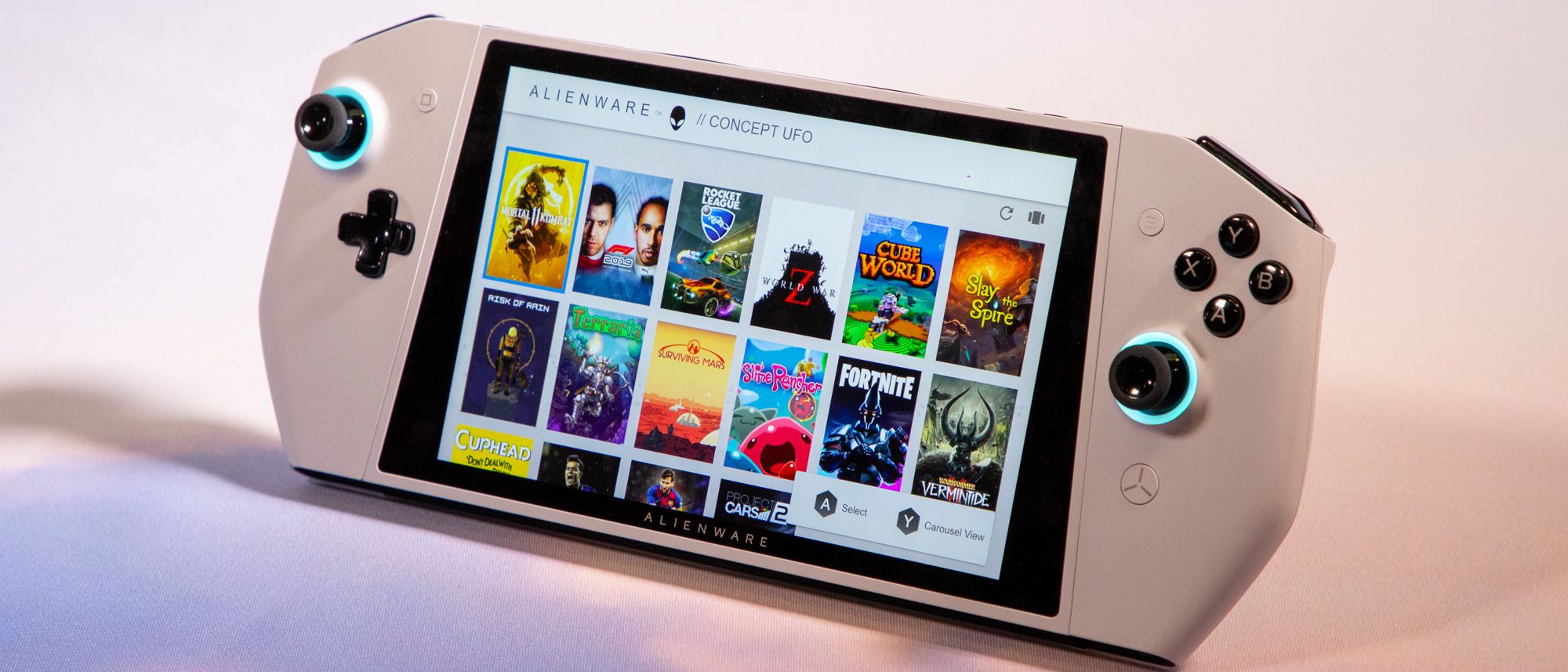
This isn’t my first rodeo with a Dell/Alienware concept. I’ve been lucky to see quite a few in my career, most recently, the three divergent designs of what became the Alienware Area-51m laptop and new Aurora. But typically this is how it works: I fly to Dell’s headquarters in Austin and sign over the soul of a newborn babe (just kidding) before I’m ushered into a windowless room with a strict camera ban.
This time it was different. Alienware arrived at the Tom’s Guide/Laptop Mag offices with a couple of mystery boxes. We gave them time to set up and when we came back into the meeting room, my mind was blown. Sitting expectantly on our conference table sat the Alienware Concept UFO.
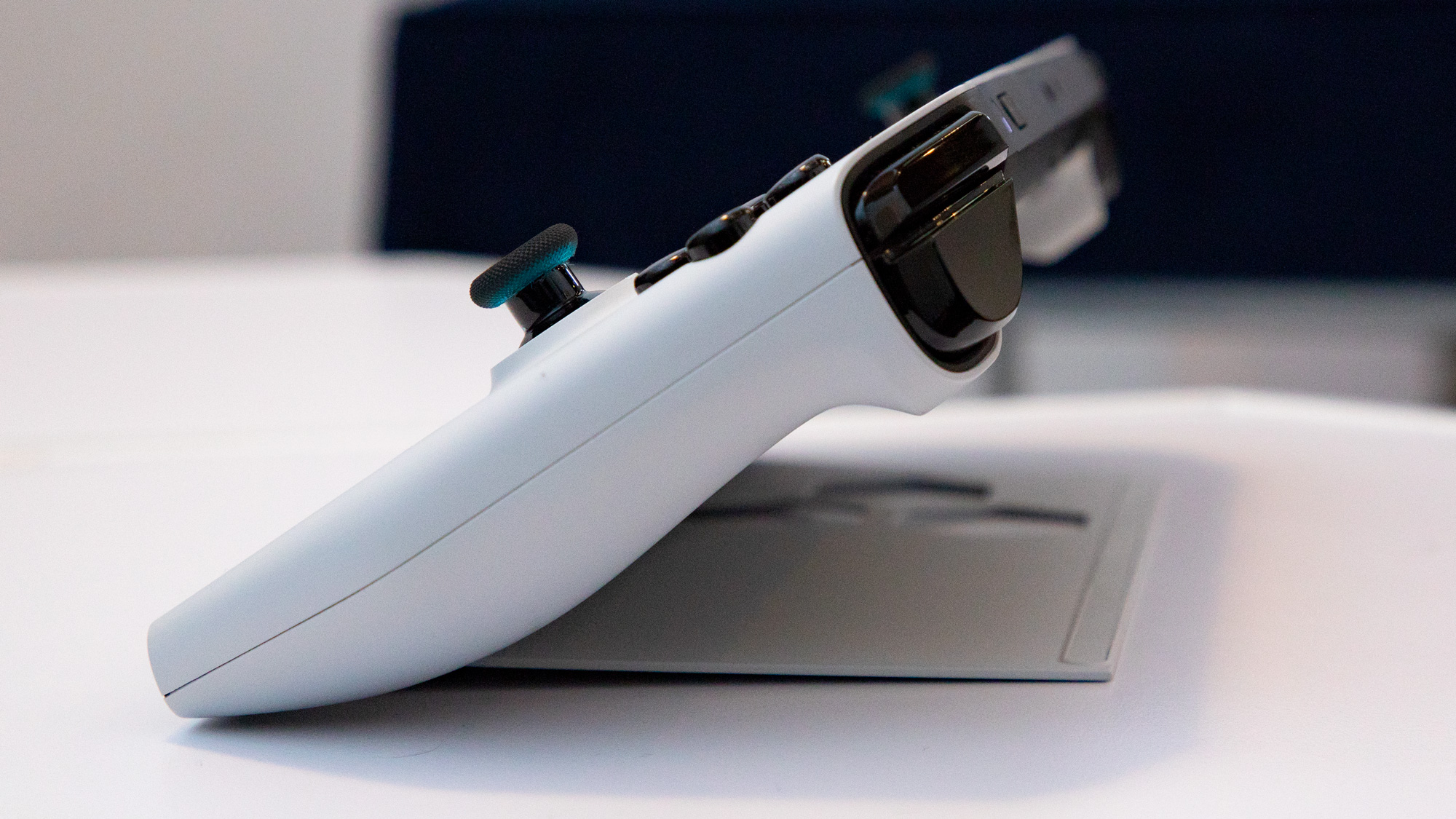
Swathed in Alienware’s new Lunar Light anodized aluminum chassis, it’s obvious the device borrows heavily from the brand’s new Legend design. But even more familiar is the shape –– it looks like a super-premium version of the Nintendo Switch. It was simultaneously familiar and well, alien. All I knew was that I needed to get my hands on it. And after a quick briefing, I did so for an hour.
But why now, why is Alienware drawing back the curtain on such an early-stages product? The answer’s pretty simple: visibility.
Sign up to get the BEST of Tom's Guide direct to your inbox.
Get instant access to breaking news, the hottest reviews, great deals and helpful tips.
“We want the world to understand that Dell is an innovative company,” said Ray Watkins, Dell consumer product reviews manager. "We want the world to see that even though we may or may not productize something. We have tons of stuff in the works in the background.”
Aundrea Rosenbaum, public Relations/investor Relations added, “[W]e've incorporated a lot of community feedback and stuff into this anyways we usually do that after product becomes productized...I think it's kind of cool because we're actually going to be able to take that same kind of feedback and incorporate it now just before we make those decisions so it's staying with the same kind of morals and values that we've had, and just bringing people in a little bit earlier.”
Alienware Concept UFO design

Nintendo definitely influenced the Concept UFO’s design, but holding it in my hands, it’s distinctly Alienware. While Drew Tosh, director of advanced ID and Kevin Turchin, director of engineering at Dell, were mum on the size and dimensions, it’s obvious that the Alienware Concept UFO is noticeably larger than the Switch –– and more solidly made. The Lunar Light-painted aluminum felt cool to the touch and more substantial than the Switch’s plastic frame.
At 8 inches, the Alienware Concept UFO's screen makes the Switch’s 6.2-inch offering seem puny by comparison.
The detachable controllers have a similar setup to the Switch with the left peripheral housing an analog stick, D-pad and the Home button while the right has the face buttons, another analog stick and select and start buttons. Both controllers have a pair of top-mounted shoulder buttons.
But the star of the show is the display. At 8-inches, it makes the Switch’s 6.2-inch offering seem puny by comparison. At the top of the display, you’ll find volume and power buttons a USB Type-C port and a headset jack.
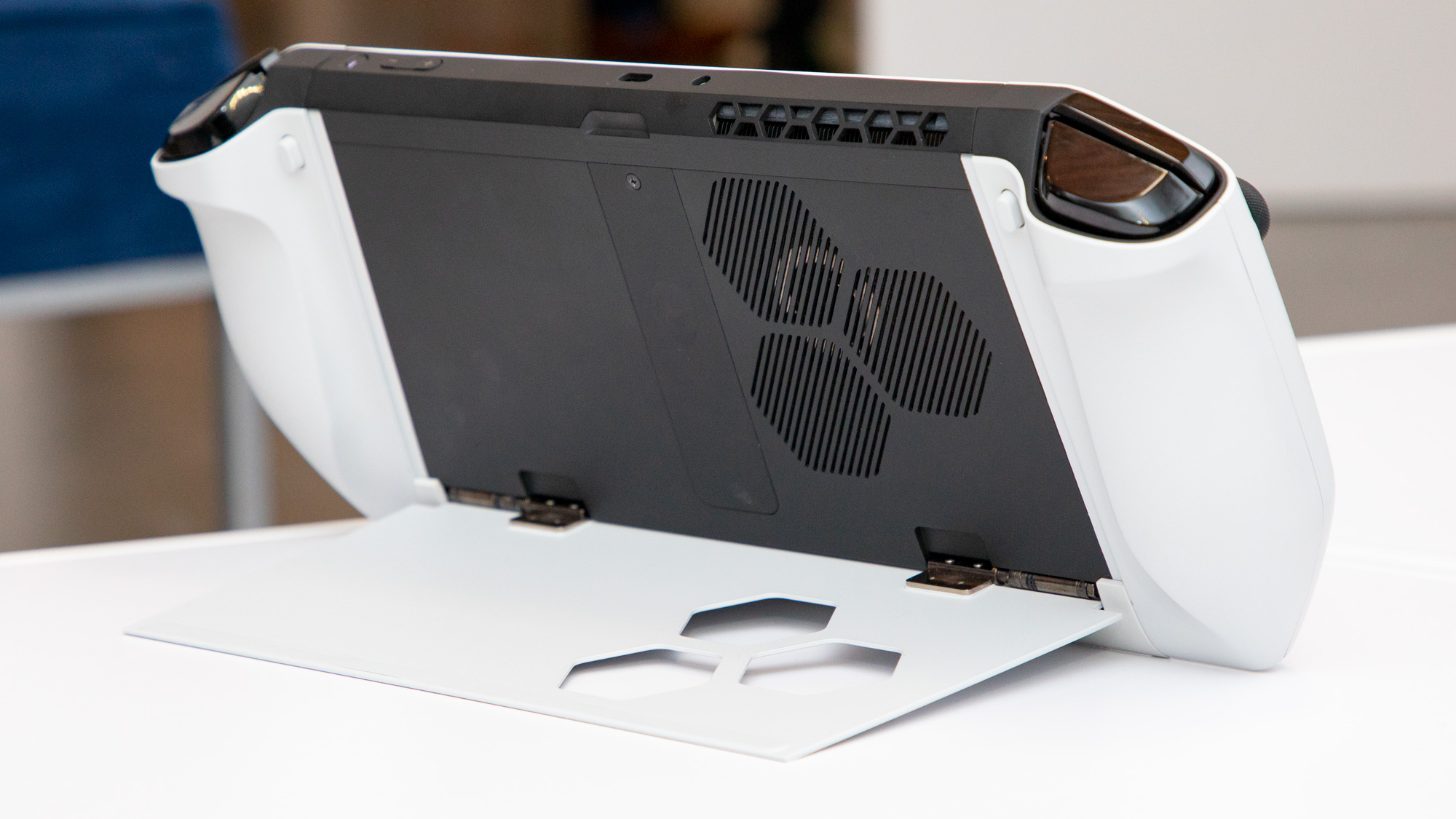
Flip the UFO over and you’ll see the rear of the display panel is made of more white aluminum with hexagonal, honeycombed-shaped vents — similar to what’s used on the cool the Area-51m. However, the panel also functions as a downward-folding kickstand revealing a black metallic back. Towards the top of the rear of the controllers is a button used to separate the controllers from the larger device.
When the controllers are detached, there’s a bridge that you can connect them to, transforming them into a traditional gamepad controller. Aesthetically, it resembles some of the best PC game controllers that ship with the Xbox One S, albeit much flatter. Buttons for volume and battery status reside at the top.
Alienware Concept UFO: Don't call it a Switch
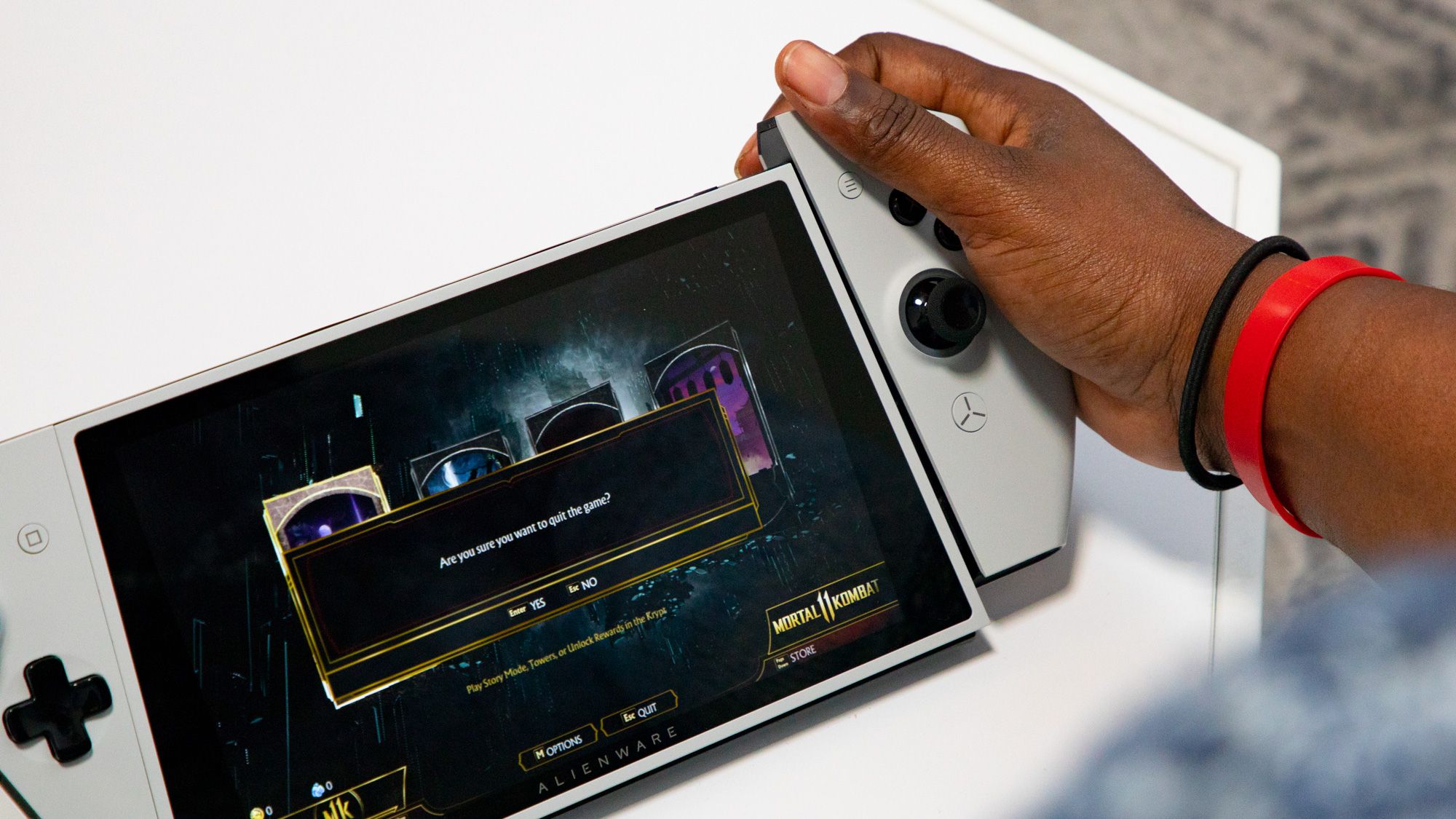
At its core, Concept UFO is a Windows 10 PC shrunk down into an extremely portable package. Unlike the Nintendo Switch, when you plug the UFO into its dock, you can use it as a full-blown PC. And although we don’t know the specs, just playing with it you can tell it blows Nintendo out of the water in terms of performance.
“The Switch controls are very generic and don't even have a decent rumble. And so we’ve set the bar of being the apex for handheld gaming.”
Kevin Turchin, director of engineering,
And while Razer and Nvidia have taken a crack at the mobile PC market back in the day with the Edge Pro and the original Nvidia Shield, you can’t even compare it to those systems.
“We feel we’re different from those other products… because they were primarily based off of tablet and mobile specifications. This is going to be a full PC, so that's that's where it's the first of its kind. It runs for Windows. It's a PC in a unique body style,” said Watkins.
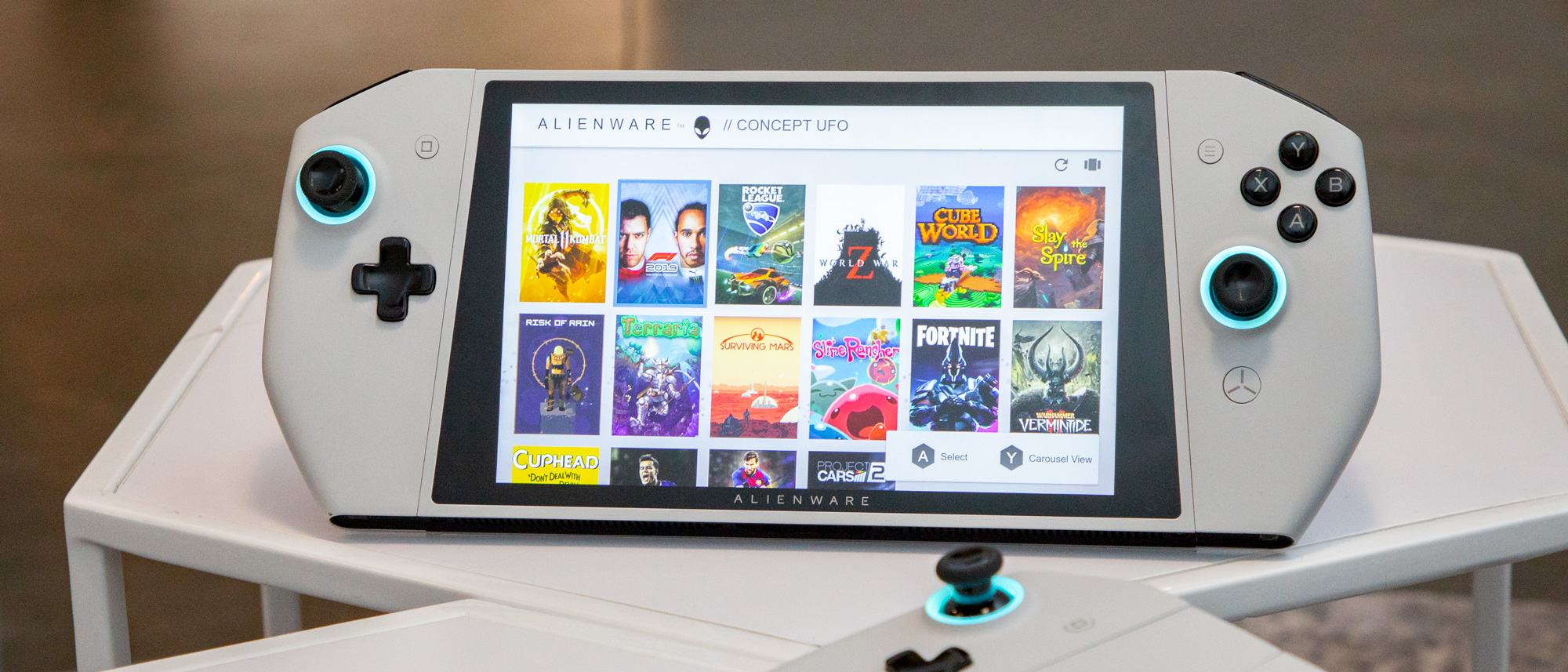
In fact, Alienware views UFO as an extension of the current gaming ecosystem, not a replacement or disruption. It’s taking a similar gaming experience that customers know from desktops and laptops, but giving you the ability to take it literally anywhere. However, even though it’s viewed as an extension, Alienware is definitely looking to attract new customers.
“I think the biggest differences ergonomically, we spent a lot of energy to really make sure we were hitting that kind of Alienware-level class of ergonomics on the controls, stated Turchin. “The Switch controls are very generic and don't even have a decent rumble. And so we’ve set the bar of kind of being the apex for handheld gaming.”
Alienware Concept UFO play time: Mobile mode
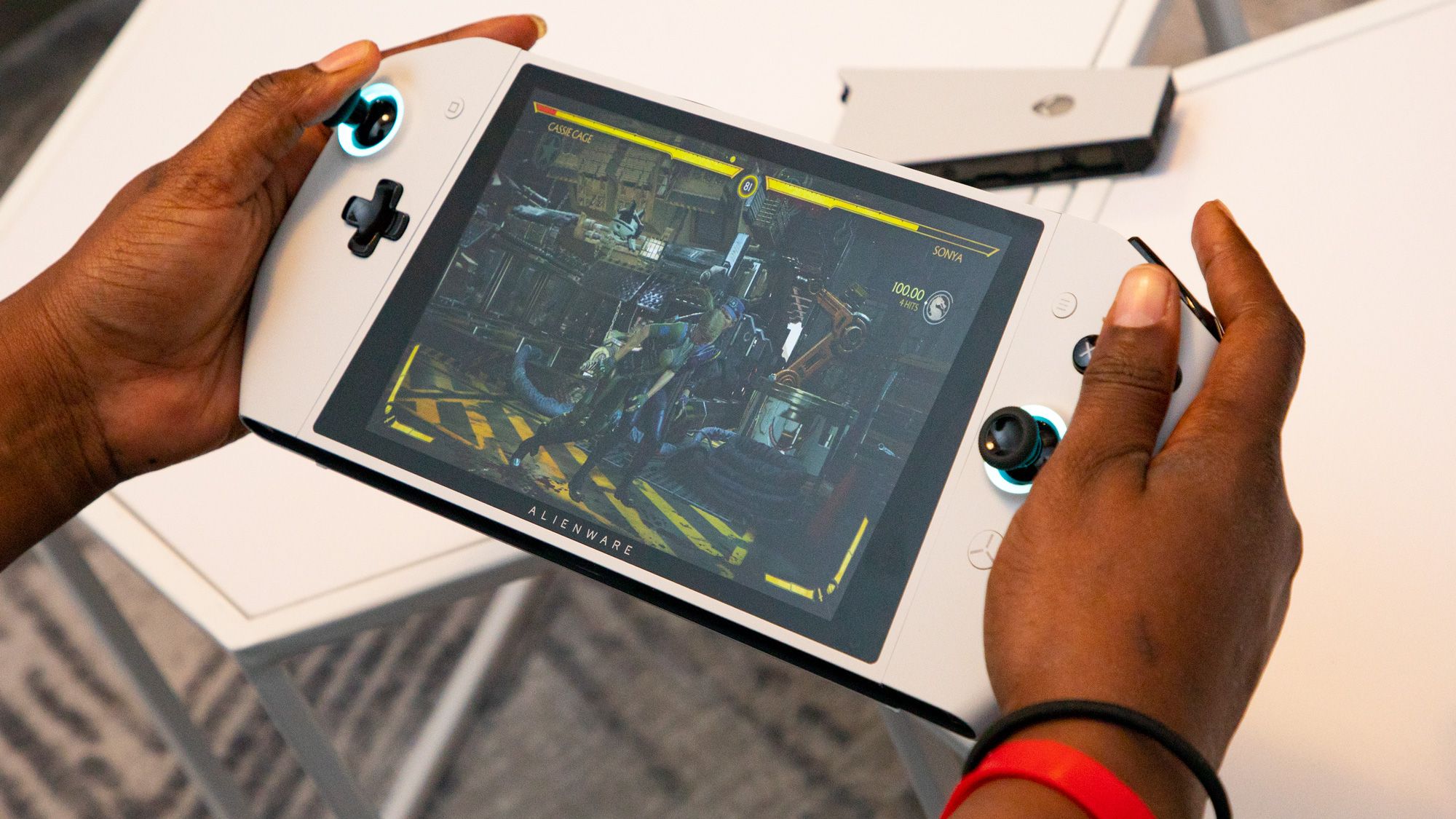
If you’ve ever played with a Nintendo Switch, playing with the Concept UFO should be like riding a bike. I’m already a fan of the weightiness of the device, but I was really sold when I played Mortal Kombat 11 and World War Z. The action was fast-paced, with smooth frame rates.
Was it as smooth as playing on a high-powered PC? Of course not. We’re not even sure what’s powering this thing (see more below). But just the fact that I was doling out vicious combos to D’vorah with Jackie Briggs was a feat in of itself, one that I’d like to see repeated during my subway commute.
Despite being larger than the Switch, playing on the UFO was just as comfortable. I didn’t experience any arm fatigue as I went through a half hour of combat. That’s important because that’s the main way that I play my Switch. Using the kickstand or docking the system are nice ways to play, but as a commuter, I need the ability to play while sitting or standing.
Alienware Concept UFO kickstand mode
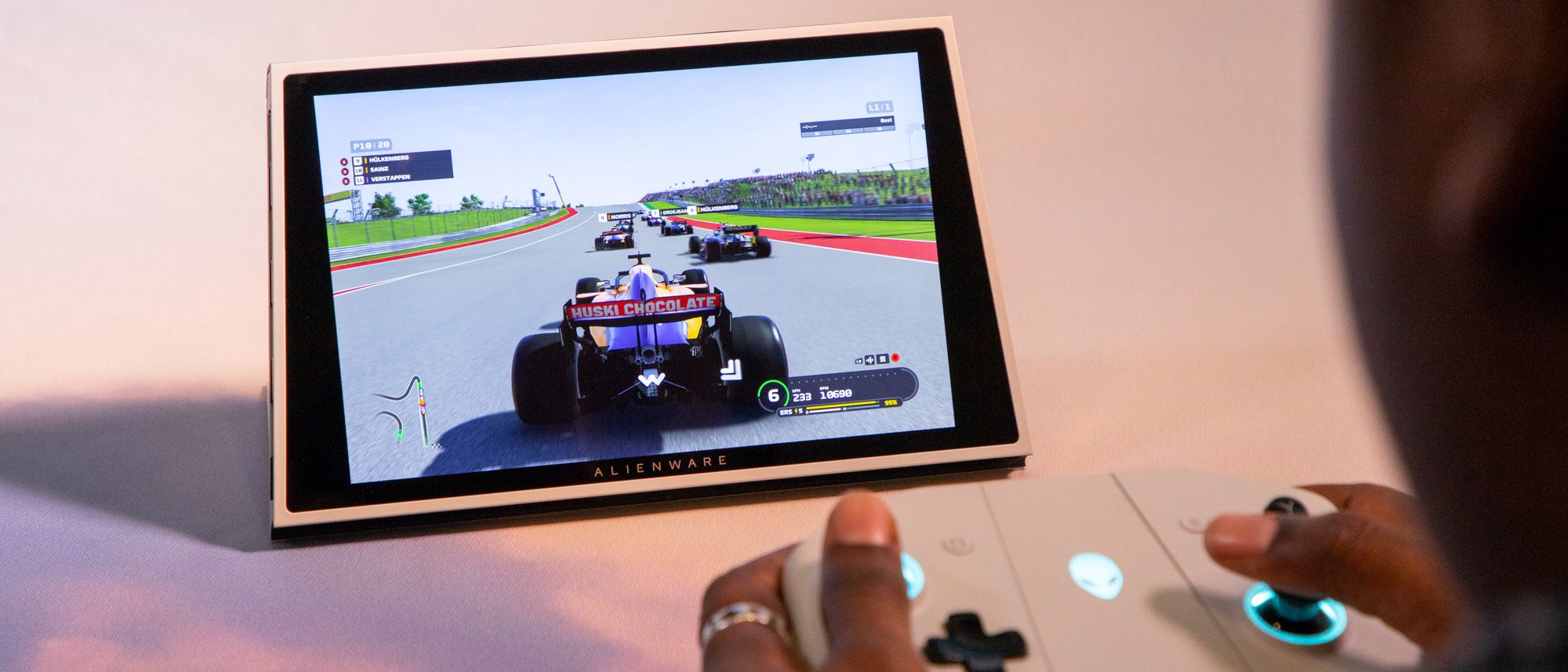
Still, using the UFO in kickstand mode is pretty cool. The controllers easy detached from the main setup and slid onto either side of the bridge effortlessly. Just line up the powerful magnets, slide them onto the bridge and you’ve got a solid controller. Alienware has made a few tweaks to the face buttons and shoulder bumpers since my hands-on sessions in October and December. Where the button travel was a bit too shallow, now you have firm springy feedback, which is important on a controller, particularly with the bumpers. However, I would love the ability to tweak the bumpers myself, similar to what you can do on a SCUF controller –– hair triggers FTW!
The ridges of the analog sticks are nice and grippy and protrude out to what felt like the default stick height. Again, I’d love the ability to either adjust height or swap out sticks all together. My favorite part about the sticks are the little LED rings around them. Currently when you connect the controllers to the either the bridge or the display panel, the rings light up to let you know they’re properly attached. And if you press a series of buttons simultaneously, the rings cycle through a rainbow of colors — it’s a very Alienware touch.
Alienware Concept UFO docked mode
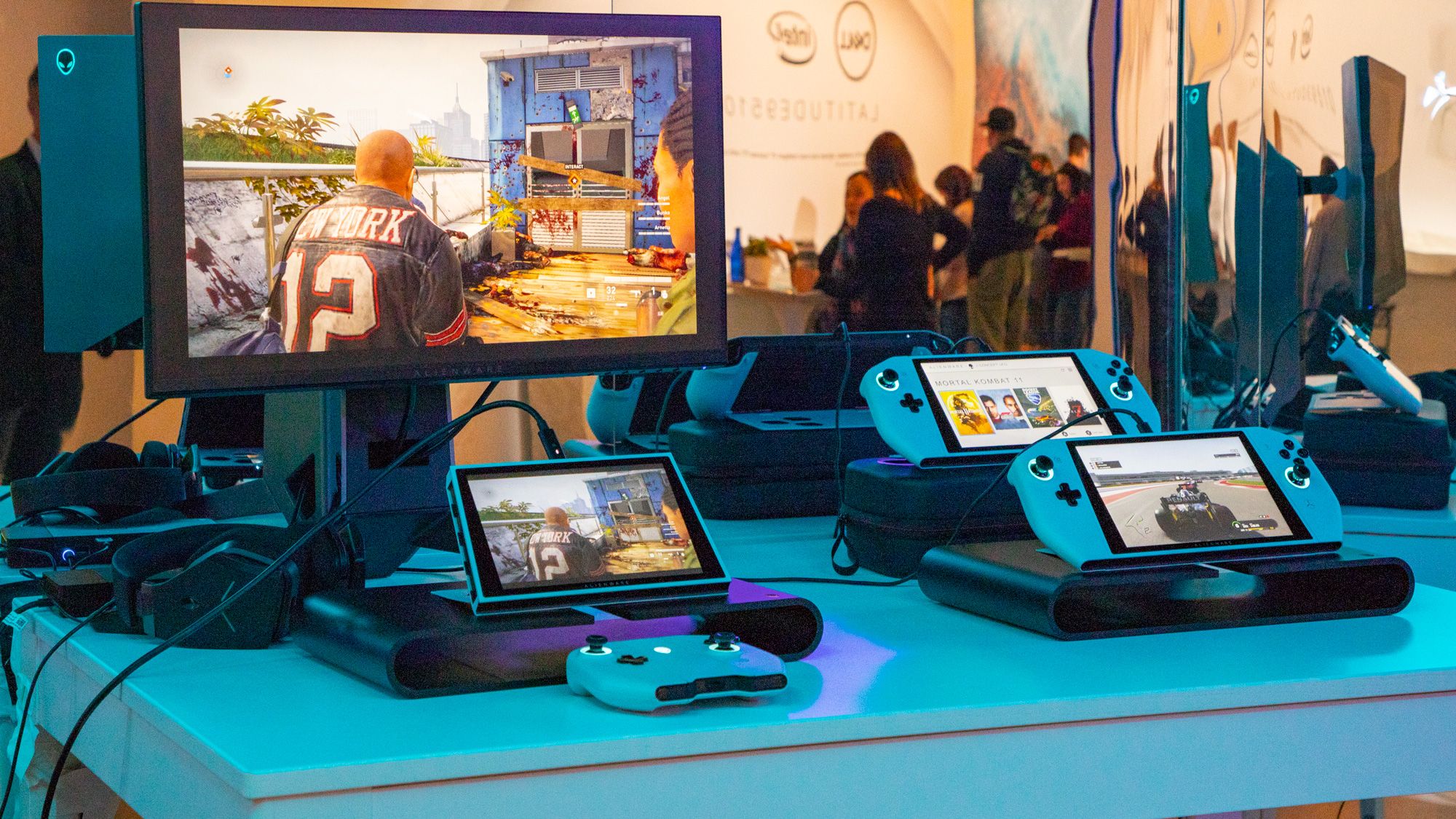
Docking the Concept UFO to a monitor is as easy as plugging in a USB Type-C cord –– because that’s what you do. Connect it to a waiting PC and boom!, you’re playing on the big screen.
I didn’t notice any latency between the display and the UFO, which is good because in shooters like World War Z, a second of latency can spell disaster. I would like a way to potentially bring the Alienware Graphics Amplifier into the mix for this use case so gamers can soup up the performance if they so choose.
How big is too big?
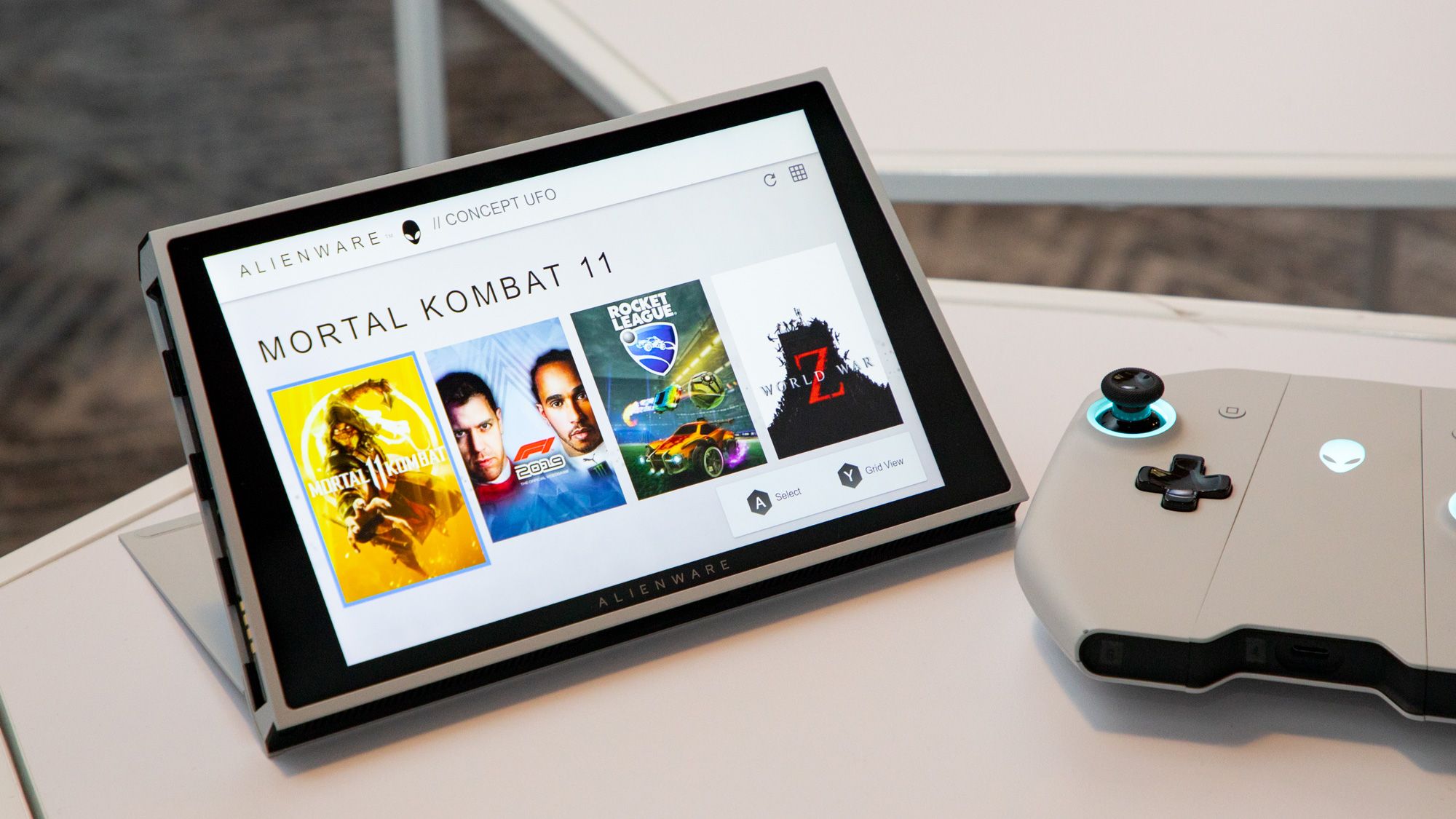
Currently, the only verified spec we have about the UFO is that the display is 8 inches. And while most gamers will appreciate the larger size, some might think it’s a bit too big for a portable system. Right now, Daniel Tosh believes the UFO’s current dimensions are on the right track, as the current iteration of the device balances what the company feels is the right size economically as well as effectively housing everything in the UFO.
“I think we're very confident that the size we're at is where the concept should be in order to really be evaluated. Anything smaller, we felt we would have to compromise on battery life or other things. And I think bigger simply becomes too heavy to hold for the for the aim that we had for the concept,” said Tosh.
This concept still needs some work
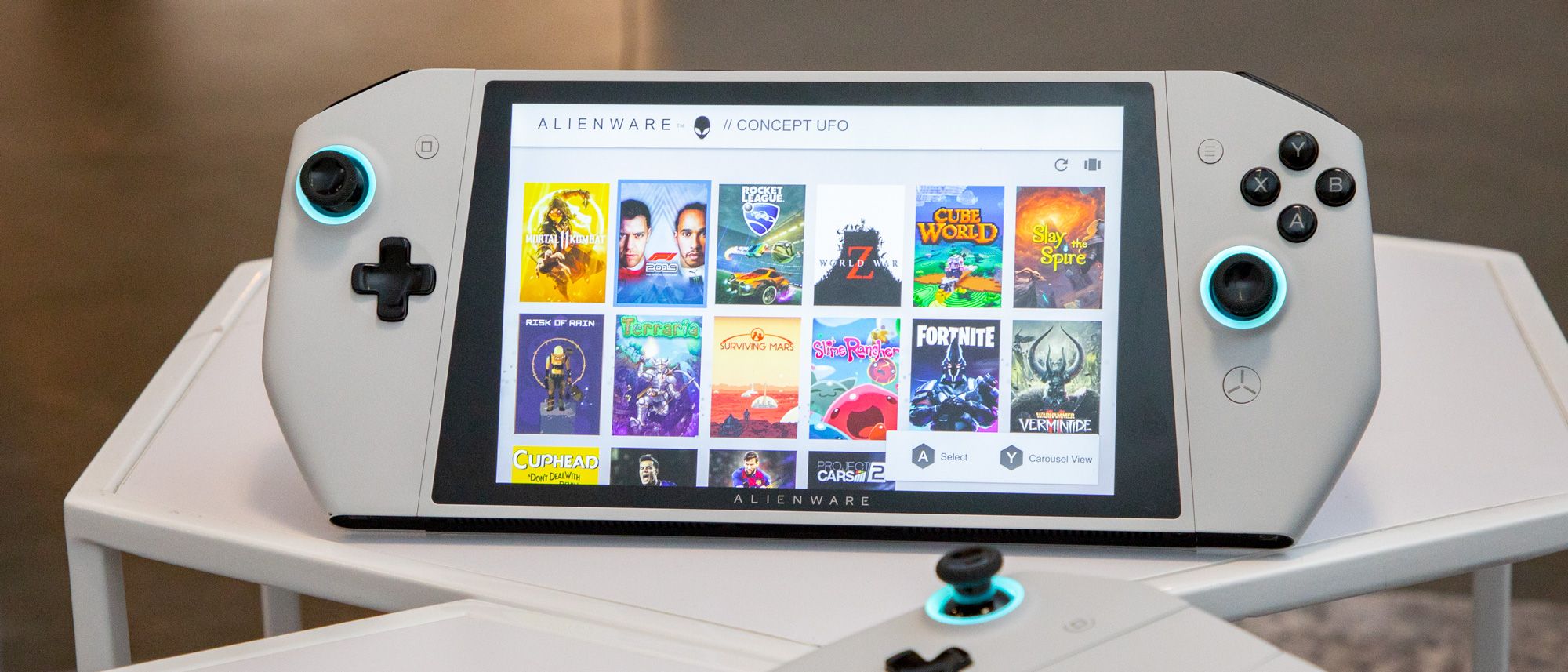
But like all concepts, there are still some places that can use some polish. For instance, the UFO isn’t really built for local multiplayer. Which is a shame, games with local co-op such as Cuphead, Sonic Mania and Towerfall Ascension are way more fun when everyone’s in the same room.
Alienware also has to figure out how it’s going to handle all the game launchers currently available on PC. Steam, Epic, UPlay, Origin, GOG, it’d be nice to have everything play nice together. For right now, UFO is using a spin on the Alienware Command Center, which offers some title aggregation, but it’s not perfect.
Alienware Concept UFO specs: Mostly a mystery
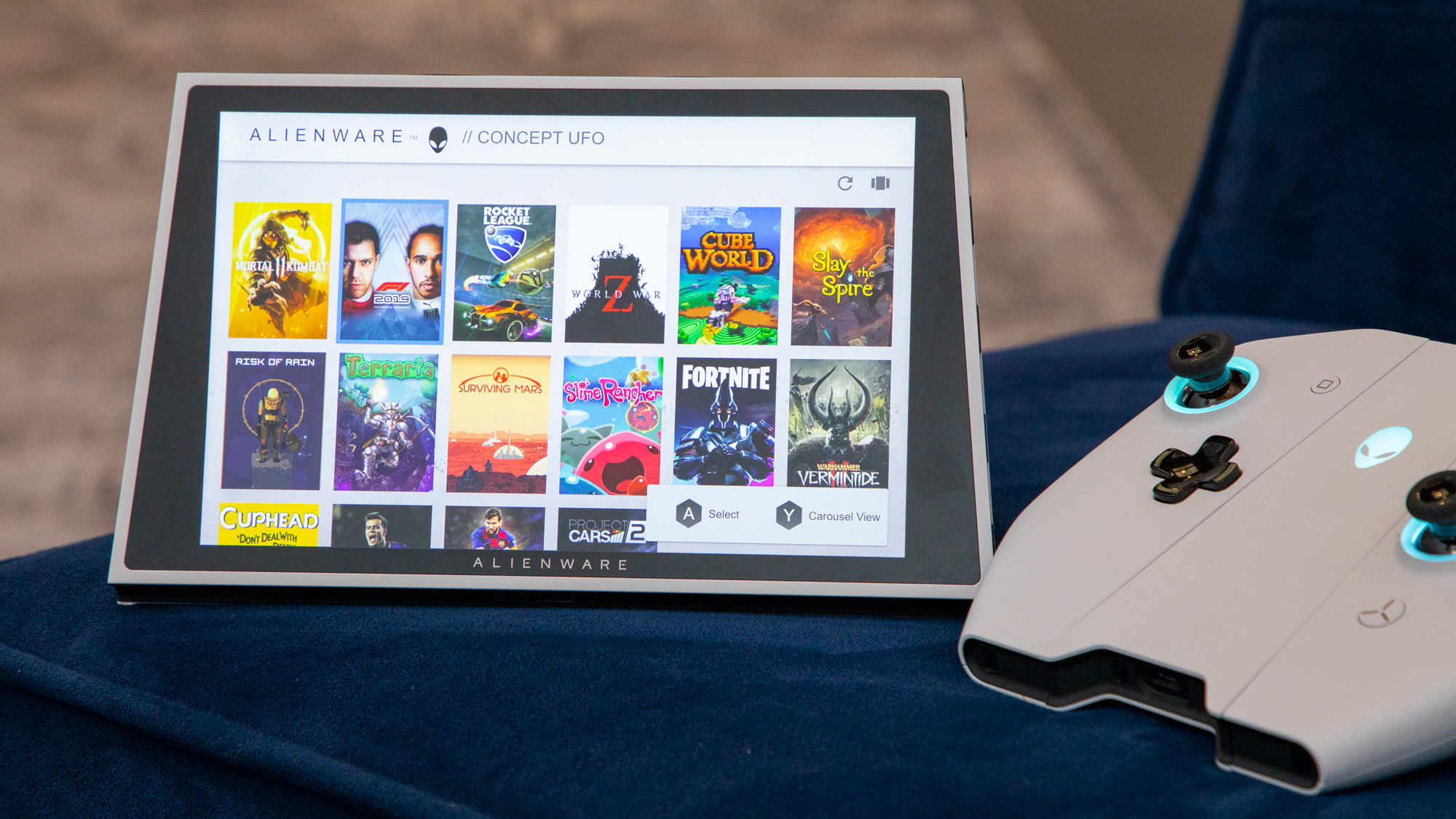
Since this is a concept device, Alienware’s keeping all the pertinent specs under wraps. So I’m going to make a few educated guesses. I’m thinking that the UFO is currently an Intel-powered device, utilizing at least a 10th Gen Core i5 processor and Intel Iris Pro graphics. As cool as it ran, I don’t think they’ve stuck a discrete graphics card into the mix yet, but that’s not to say that it’s not possible down the line. Although that would be walking a tightrope of performance vs. battery life.
Since UFO borrows heavily from the Area-51m’s design, the engineers have prodigiously been applying those lessons to the UFO. This could come in handy for cooling solutions if Alienware decides to get froggy and add a discrete graphics chip. If they are going to go this route, I’m hoping they’ll consider something like an Nvidia GeForce GTX 1660Ti, but wouldn’t be surprised if they used one of the MX chips to mitigate price, power consumption and battery life.
However, since AMD is looking to make its presence felt again in mobile PC gaming, I wouldn’t be surprised if a custom AMD chip showed up. AMD already has a stranglehold on the console market, I can’t see the company wanting to concede this hot little number to either Intel or Nvidia. It also doesn’t hurt that Frank Azor, co-founder of Alienware and the face of the brand for the last decade, now works at AMD as the chief architect of gaming solutions. All I’m saying is that the possibilities are both endless and exciting.
Alienware Concept UFO pricing
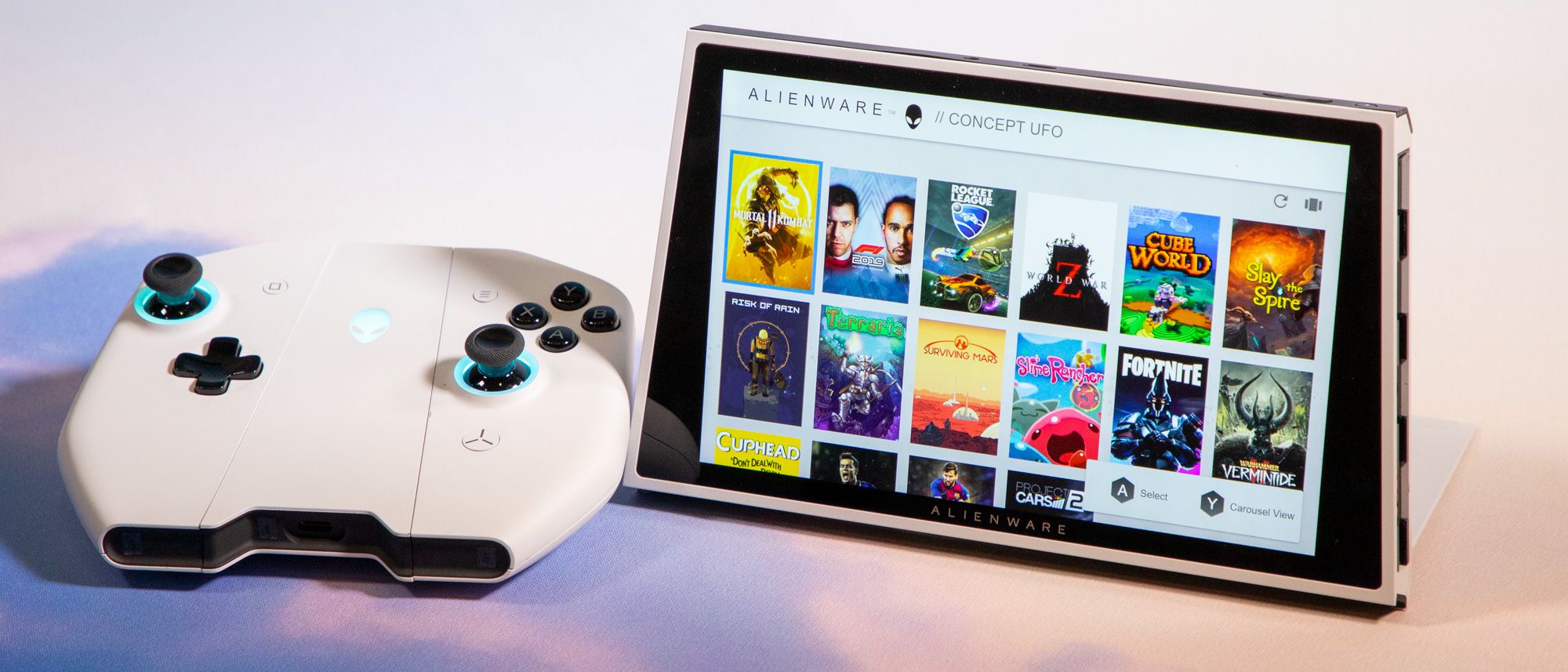
When the Razer Edge Pro launched way back in 2013, the base model cost $999. For that price, you got a Windows 8 tablet, with a 1.7-GHz Intel Core i5-3317U processor, 4GB of RAM, a 64GB SSD, Intel HD 4000 Graphics and an Nvidia GeForce GT 640M LE GPU with 2GB of VRAM. The premium tier bumped you up to a Core i7 CPU, 8GB of RAM and 256GB SSD to the tune of $1,449. Neither price point was all that palatable for gamers.
Fast forward to now and Nintendo’s selling the original Switch for $299 and the new Switch Lite for $199. We would expect the UFO's pricing to be between $500 and $1,000, but for now that's just speculation.
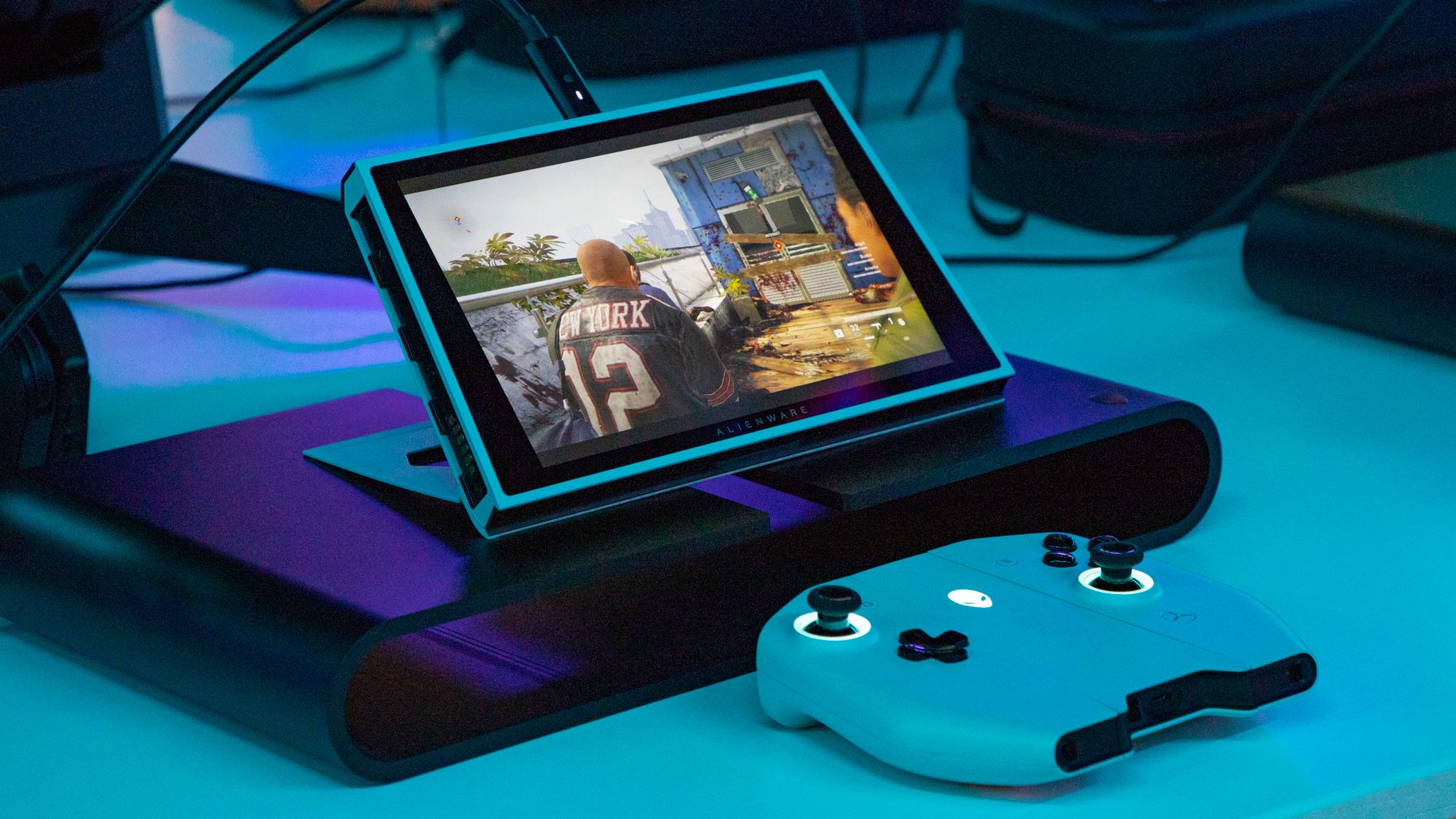
Alienware needs to try to match the upcoming Xbox Series X and PlayStation 5 consoles. Depending on the UFO’s specs, Alienware will have a better time convincing gamers that this high-powered, incredibly mobile and versatile system is just as viable as a gaming system as a console. In short, the UFO needs to be marketed as the first mobile PC console.
Now the company could stick to its bread-and-butter clientele, the hardcore gamer, but as exacting as that base is about frame rates, cooling and performance, this route threatens to turn the UFO into a very niche product.
Alienware wants your feedback
Interested in getting the UFO into your eager little hands? So am I. I can see myself replaying The Witcher 3: Wild Hunt on this thing while riding the A train on the way to work, happily humming “Toss a Coin to Your Witcher.”
But, as this is a concept device, it’s up to you to get the word out to Alienware. Unlike most of the brand’s products, this one isn’t going to happen in a bubble. It’s going to take community support to make it happen.
“We want to take it further and how it's received at CES I think will help shape that conversation,” said Watkins.
Outlook
The Concept UFO marks the first time Alienware has pulled back the curtain on its path to bringing a new product to fruition. It’s a path fraught with decisions that could bring the device to market or relegate it to the vaporware bin. After demoing the device several times, it seems that the UFO is further along in the development than Alienware would have us believe.
True, there are still some bugs to work out such as title aggregation and a co-op solution, but as it stands, the UFO could be the product PC gamers searching for a truly mobile solution are looking for. But in addition to fixing any hardware and software issues, the biggest factor in the concept’s ultimate success or failure will lie with the price and how this device is marketed.
If Alienware only goes after hardcore gamers, it won’t gain the traction it needs to truly thrive. The company is going to have to take a page of the console maker’s playbook and make it affordable enough that moms and dads won’t stop dead in their tracks due to sticker shock.
Be sure to check out our CES 2020 hub for the latest news and hands-on impressions out of Las Vegas.
Sherri L. Smith has been cranking out product reviews for Laptopmag.com since 2011. In that time, she's reviewed more than her share of laptops, tablets, smartphones and everything in between. The resident gamer and audio junkie, Sherri was previously a managing editor for Black Web 2.0 and contributed to BET.Com and Popgadget.

